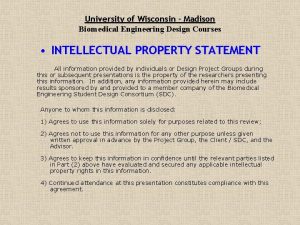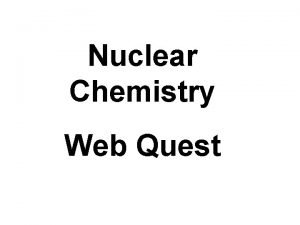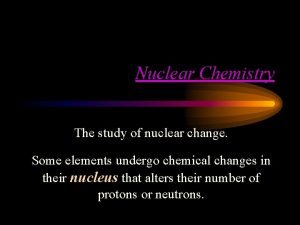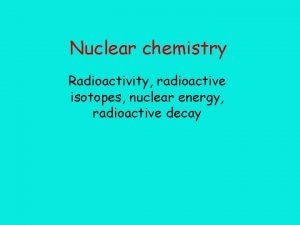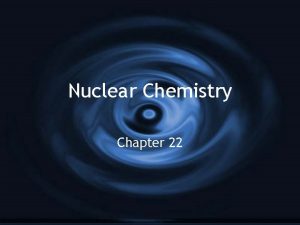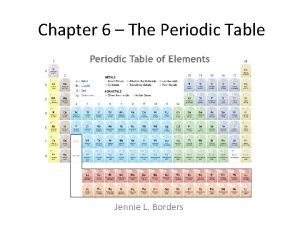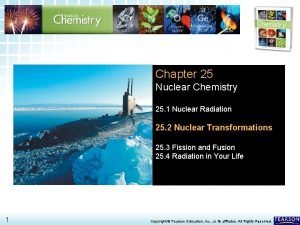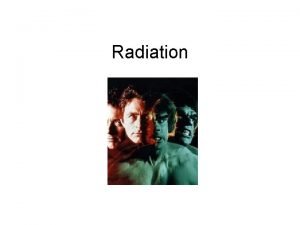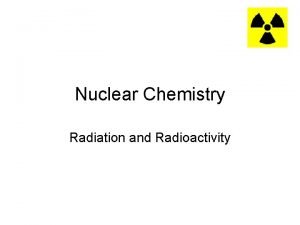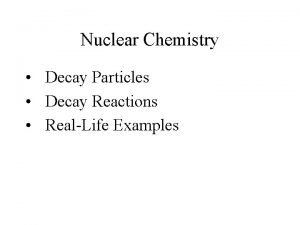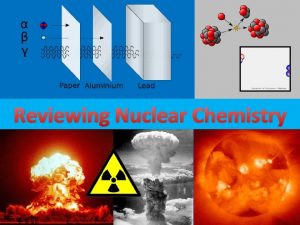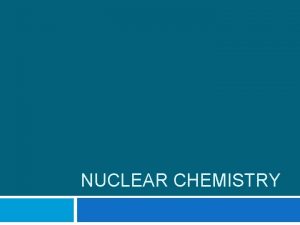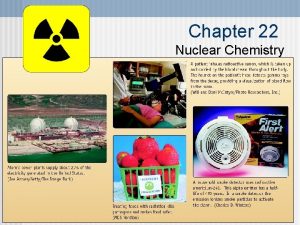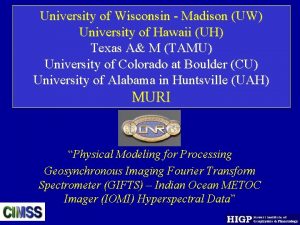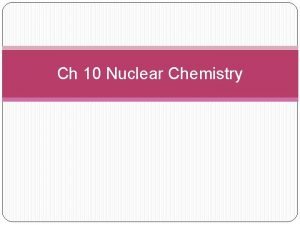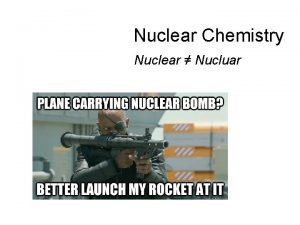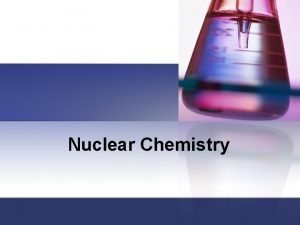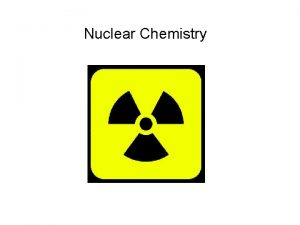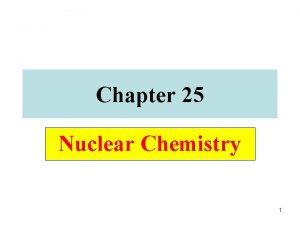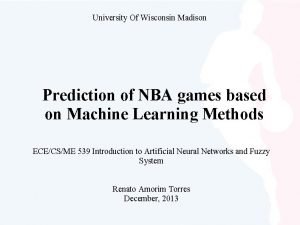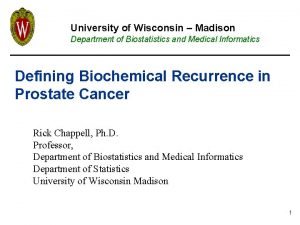University of Wisconsin Madison Nuclear Chemistry Types of


















- Slides: 18

University of Wisconsin - Madison Nuclear Chemistry

Types of Radiation Alpha (α) particles are composed of 2 protons and 2 neutrons. 4 2 He This means that they have a mass number of 4 and an atomic number of 2. Because it has 2 protons and 2 neutrons, this is essentially the nucleus of a helium atom.

Alpha (α) Particle While alpha particles are essentially the nucleus of a helium atom, they do not have any electrons originally. This means alpha particles have a +2 charge! Alpha particles also have the greatest mass of any nuclear radiation.

Alpha (α) Particle Because alpha particles are so large, they are unable to penetrate a sheet of paper. Once they “steal” two electrons, they become stable, unreactive helium atoms.

Types of Radiation Beta (β) particles are essentially electrons that are emitted from the nucleus of an atom. 0 -1 e Remember, electrons do not have enough mass to consider, so we place a 0 in the mass number spot. They have a -1 charge, so we place this in the atomic number spot. Because beta particles are essentially electrons, we use the letter e as a symbol.

Beta (β) Particle When beta particles are emitted from the nucleus, a neutron becomes a proton! Since these are electrons, they have a -1 charge. e 0. 0005486 0 -1 Beta particles have a small amount of mass, but it is so small that we round it to 0.

Beta (β) Particle Because beta particles are thousands of times smaller than an alpha particle, they can penetrate much deeper into matter. They must be absorbed with a sheet of metal, like aluminum.

Types of Radiation High energy gamma (γ) rays are always released when a nuclear reaction occurs. 0 0 γ Gamma rays are energy and not matter, but they could appear in a nuclear reaction equation. They have no mass, so we a 0 in the mass number spot. They have no charge, so we a 0 in the atomic number spot.

Gamma (γ) Rays Gamma rays are not particles at all. They are a form of electromagnetic radiation. This means gamma rays have NO CHARGE (0)! Because gamma rays are energy, they have NO MASS! The mass is not just very small, it is actually zero!

Gamma (γ) Rays Because gamma rays are not particles at all, they can penetrate deeply into matter. It takes a thick wall of lead to absorb gamma radiation. Nuclear power plants use thick lead walls to prevent radiation from escaping.

Gamma (γ) Radiation The energy of an electromagnetic wave is directly proportional to its frequency. Gamma radiation has the highest frequency and greatest energy of all EM radiation!

Fission vs. Fusion Your teacher will now show you a short video over fission vs. fusion.

Fission vs. Fusion BOTH types of nuclear reactions convert matter into energy according to Einstein’s famous equation. This means that a small amount of mass turns into a HUGE amount of ENERGY!

Fission reactions occur when a nucleus breaks apart into several smaller nuclei. University of Wisconsin - Madison

Fission is easy to control and start, so it is used in all nuclear power plants and most nuclear weapons, but it produces harmful toxic waste. University of Wisconsin - Madison

Fusion reactions occur when a nuclei join together to form a larger nucleus. University of Wisconsin - Madison

Fusion produces more energy and little toxic waste, but it is too difficult to start and control for us to use to produce energy. University of Wisconsin - Madison

Fusion While we cannot use fusion to produce electricity, all life relies on the fusion reactions that occur inside the sun.
 Chemical engineering wisconsin
Chemical engineering wisconsin University of wisconsin-madison biomedical engineering
University of wisconsin-madison biomedical engineering Lesson 15 nuclear quest nuclear reactions
Lesson 15 nuclear quest nuclear reactions Fisión nuclear vs fision nuclear
Fisión nuclear vs fision nuclear Uw integrative medicine
Uw integrative medicine University of wisconsin nickname
University of wisconsin nickname Oshkosh employee discount
Oshkosh employee discount James madison rotc
James madison rotc Chernobyl nuclear disaster webquest
Chernobyl nuclear disaster webquest Nuclear chemistry
Nuclear chemistry Application of nuclear chemistry
Application of nuclear chemistry Application of nuclear chemistry
Application of nuclear chemistry Effective nuclear charge trend
Effective nuclear charge trend Chapter 24: nuclear chemistry answer key
Chapter 24: nuclear chemistry answer key Chapter 25 nuclear chemistry answer key
Chapter 25 nuclear chemistry answer key Nuclear chemistry review worksheet answer key
Nuclear chemistry review worksheet answer key Applications of nuclear chemistry
Applications of nuclear chemistry T half life formula
T half life formula Rectangle real life examples
Rectangle real life examples

